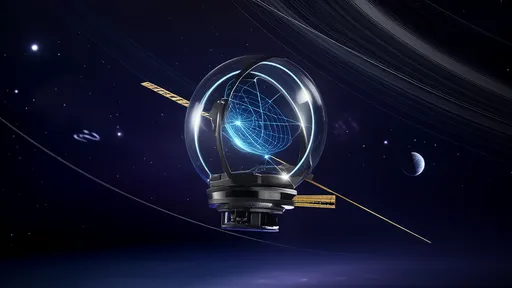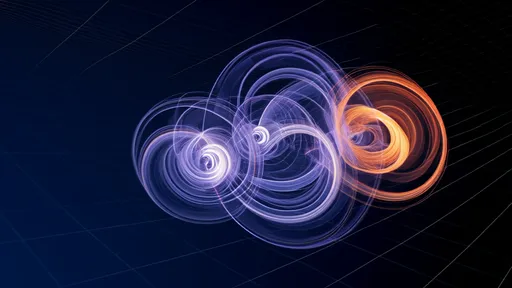The universe has always been a source of profound mysteries, and among its most intriguing puzzles is the phenomenon of chiral bias in cosmic molecules. Recent studies have uncovered a curious preference for certain molecular orientations in the vastness of space, particularly when interacting with polarized light. This discovery challenges our fundamental understanding of symmetry in nature and raises questions about the origins of life itself.
Chirality, or "handedness," refers to the geometric property of a molecule that cannot be superimposed on its mirror image. Like left and right hands, chiral molecules exist in two enantiomeric forms. What makes this cosmic mystery so compelling is the apparent preference for one form over another when these molecules are exposed to polarized starlight. The implications are staggering—could this asymmetry explain why life on Earth predominantly uses left-handed amino acids and right-handed sugars?
Astronomers first detected this molecular bias while studying star-forming regions where ultraviolet light becomes polarized as it passes through interstellar dust grains. The polarized light then interacts with organic molecules in space, creating an excess of one chiral form. This process, known as photochirogenesis, suggests that the very building blocks of life may have been "pre-selected" by cosmic forces long before reaching our planet.
The mechanism behind this phenomenon remains hotly debated. Some researchers propose that the weak nuclear force—the only fundamental force known to violate parity symmetry—might play a role at the quantum level. Others suggest that circularly polarized light from neutron stars or other energetic sources could be responsible for the enantiomeric excess. What's clear is that the universe appears to have a subtle but definite preference when it comes to molecular orientation.
Laboratory experiments have successfully replicated some aspects of this cosmic chirality. When researchers expose racemic mixtures (equal amounts of both enantiomers) to circularly polarized light in simulated space conditions, they observe a slight but measurable bias. These findings lend credence to the theory that extraterrestrial factors could have influenced the homochirality essential for life as we know it.
The implications extend far beyond academic curiosity. Pharmaceutical companies are particularly interested because different enantiomers of the same drug can have dramatically different effects on the human body. Understanding how nature selects specific molecular orientations might revolutionize drug design and manufacturing processes. Moreover, the detection of chiral molecules in space could serve as a potential biosignature in the search for extraterrestrial life.
As observational techniques improve, scientists are mapping the distribution of chiral molecules throughout our galaxy. Early results suggest that the degree of enantiomeric excess varies significantly depending on the environment. Dense molecular clouds near star-forming regions show particularly strong biases, while more diffuse interstellar areas exhibit nearly equal mixtures. This spatial variation hints at complex astrophysical processes at work.
The connection between cosmic chirality and life's origins remains speculative but compelling. Some astrobiologists propose that the delivery of pre-biased organic molecules via comets and meteorites could have jump-started life's preference for specific enantiomers. This would mean that the handedness of biomolecules isn't random but rather a consequence of astrophysical phenomena that occurred billions of years before Earth formed.
Future missions aim to probe this mystery more deeply. Proposed spacecraft equipped with advanced polarimeters could analyze the chirality of molecules in distant planetary systems. Meanwhile, next-generation telescopes will search for the spectroscopic signatures of chiral molecules in exoplanet atmospheres. Each new discovery brings us closer to understanding whether the universe inherently favors certain molecular configurations.
This cosmic preference for molecular orientation may represent one of the most fundamental asymmetries in nature. From the quantum scale of subatomic interactions to the vast reaches of interstellar space, chirality appears to be woven into the fabric of reality. As we continue to unravel this mystery, we may find that the origins of life's molecular preferences lie not in earthly chemistry, but in the polarized light of distant stars.

By /Aug 5, 2025

By /Aug 5, 2025

By /Aug 5, 2025

By /Aug 5, 2025

By /Aug 5, 2025

By /Aug 5, 2025

By /Aug 5, 2025

By /Aug 5, 2025

By /Aug 5, 2025

By /Aug 5, 2025

By /Aug 5, 2025

By /Aug 5, 2025

By /Aug 5, 2025

By /Aug 5, 2025

By /Aug 5, 2025

By /Aug 5, 2025

By /Aug 5, 2025

By /Aug 5, 2025

By /Aug 5, 2025

By /Aug 5, 2025